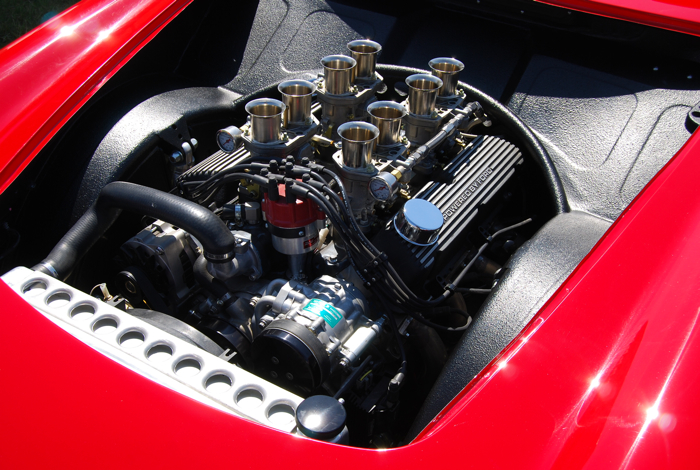Opel Corsa Engine: Top Tips for Maintenance and Treatment
Opel Corsa Engine: Top Tips for Maintenance and Treatment
Blog Article
Exploring the Inner Workings of a Compact Lorry's Engine System
As vehicle drivers, we frequently consider provided the detailed procedures that happen within the boundaries of our lorry's engine system. The small yet complex equipment that propels us ahead is a marvel of design precision and coordination. From the controlled surges in the combustion chamber to the careful timing of gas injection, every element plays a critical role in the smooth operation of the engine. In this exploration of a small vehicle's engine system, we will untangle the inner functions of this mechanical symphony, clarifying the mysteries that drive us ahead on our everyday trips.
Combustion Process Introduction
The combustion procedure in a compact automobile's engine system is a crucial system that successfully transforms fuel right into energy to power the automobile. This procedure happens within the combustion chamber of the engine, where fuel and air mix, ignite, and produce controlled explosions. The combustion process includes 4 main stages: intake, compression, power, and exhaust.
During the consumption phase, the piston moves downward, attracting in a mixture of air and gas right into the combustion chamber. This descending motion produces the power needed to drive the automobile. This cyclic burning process is basic to the operation of a compact lorry's engine system, making certain efficient power conversion for propulsion.
Piston and Cylinder Communication

The piston's specific fit within the cyndrical tube is essential for maintaining optimal compression and preventing energy loss during combustion. Tight clearances between the piston and cylinder walls guarantee efficient sealing, allowing the piston to move efficiently without permitting gases to leakage past. Correct lubrication is additionally crucial to minimize rubbing and put on in between these parts, boosting durability and performance.
Additionally, the design and materials utilized in making the piston and cylinder impact engine performance and resilience. Modern engines frequently employ light-weight yet long lasting materials like light weight aluminum alloys for pistons and cylinder liners to reduce inertia and boost thermal effectiveness. In general, the harmonious communication in between the piston and cyndrical tube is fundamental to the engine's view website functionality and total performance.
Fuel Shot System Performance
Fuel shot systems in small vehicle engines play a critical duty in exactly supplying fuel to the combustion chamber for reliable and controlled ignition. The fuel shot system works by infusing fuel right into the combustion chamber at the optimal moment throughout the engine's operation (opel corsa engine). This specific timing ensures that the gas blends uniformly with the air for proper burning, resulting in boosted fuel performance and decreased exhausts
There are mainly two kinds of fuel shot systems made use of in compact automobile engines: port fuel injection (PFI) and straight gas injection (DFI) PFI systems infuse gas into the consumption port prior to the intake valve, while DFI systems infuse gas straight into the combustion chamber. Both systems have their benefits, with DFI offering much better gas atomization and PFI offering a more economical solution.
Comprehending Engine Air Conditioning Mechanisms
Effective operation of a compact vehicle's engine counts greatly on the efficiency of its cooling mechanisms. The air conditioning system in a small vehicle typically consists of numerous elements working with each other to control the engine temperature. Understanding these engine air conditioning systems is important for maintaining the efficiency and durability of a compact automobile's engine system.

Exhaust System Parts Explained
The ideal functioning of a portable automobile's engine cooling mechanisms relies on a complementary system known as the exhaust system, which consists of different important components for making certain effective emissions and engine efficiency. The exhaust system includes Source elements such as the exhaust manifold, catalytic converter, muffler, and tailpipe. The exhaust manifold collects exhaust gases from the engine's routes and cyndrical tubes them to the catalytic converter. The catalytic converter then transforms hazardous toxins in the exhaust into less harmful exhausts before launching them through the muffler and tailpipe.
One important component of the exhaust system is the oxygen sensing unit, which keeps track of the oxygen levels in the exhaust gases to help control fuel intake and guarantee ideal engine efficiency. opel corsa engine. Furthermore, the resonator may be present in some exhaust systems to reduce sound degrees. Generally, the exhaust system plays a crucial duty in preserving engine performance, reducing dangerous exhausts, and making certain a quieter driving experience for portable automobile proprietors

Verdict
In verdict, the portable vehicle's engine system is an intricate mix of components that collaborate to assist in the combustion process, transform gas into power, and remove waste gases. Recognizing the inner operations of the engine system, consisting of the piston and cylinder interaction, gas shot system, engine air conditioning systems, and exhaust system elements, is critical for preserving ideal performance and performance of the automobile.
The burning process in a small vehicle's engine system is a vital mechanism that effectively converts fuel right into energy to power the vehicle.Gas shot systems in small car engines play a critical function in precisely supplying fuel to the burning chamber for reliable and regulated ignition.There are primarily two types of gas injection systems used in portable vehicle engines: port gas injection (PFI) and straight fuel shot (DFI) Recognizing these engine cooling systems is crucial for maintaining the performance and long life of a small lorry's engine system.
The optimal performance of a small vehicle's address engine air conditioning systems depends on a corresponding system understood as the exhaust system, which comprises numerous important parts for making certain effective emissions and engine efficiency.
Report this page